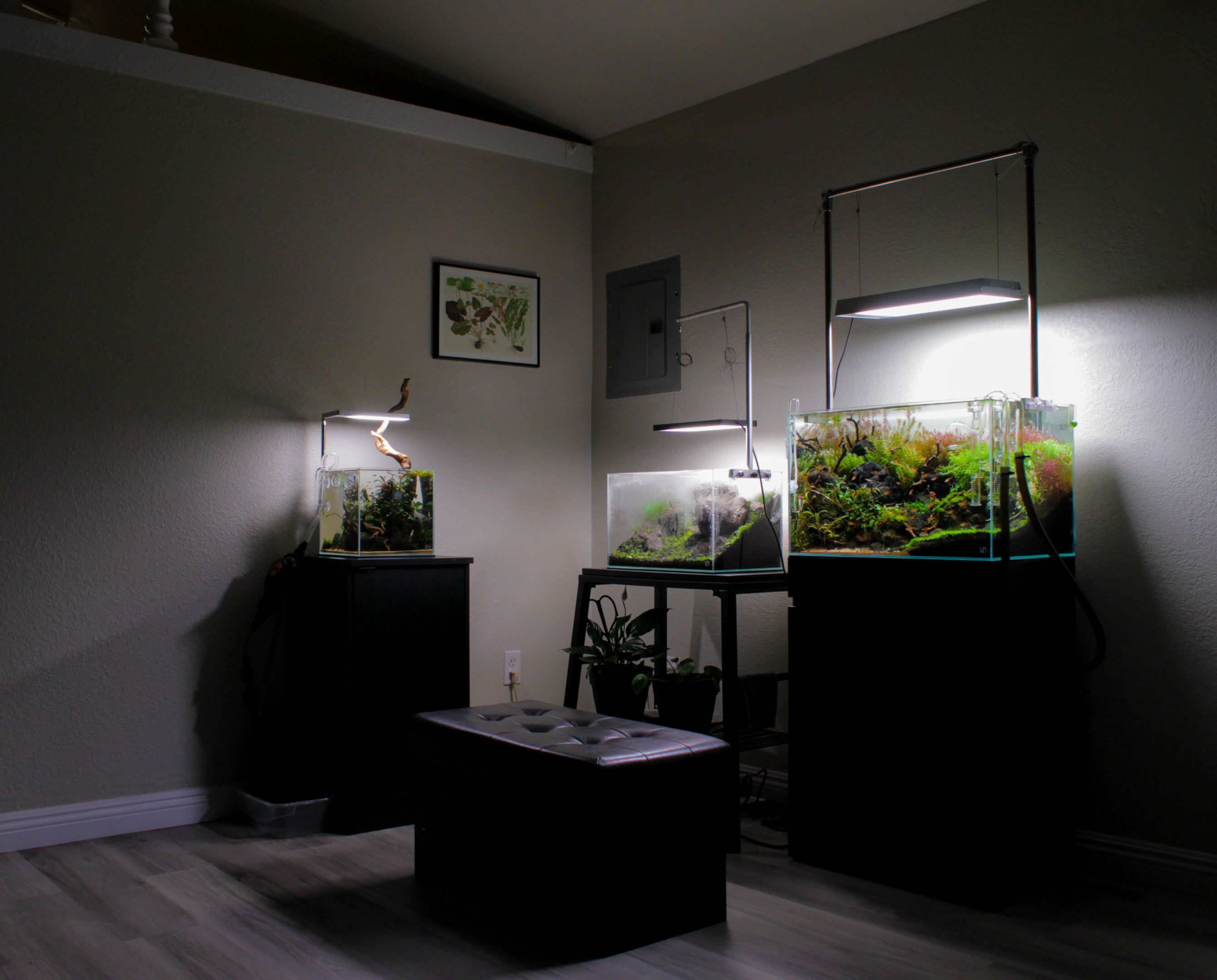Aquarium lighting
Have you ever wondered what is the role of aquarium lighting? The first thing, that most people are aware of is the illumination of our aquascape. Having sufficient aquarium lighting, enables us to admire an actual work of art.
However, aquarium lights are also important in terms of providing energy and oxygen to our livestock. It ensures the growth for live plants that conduct photosynthesis. During the process, aquarium plants use water, carbon dioxide, other compounds and of course light to convert it into oxygen and energy-rich compounds.
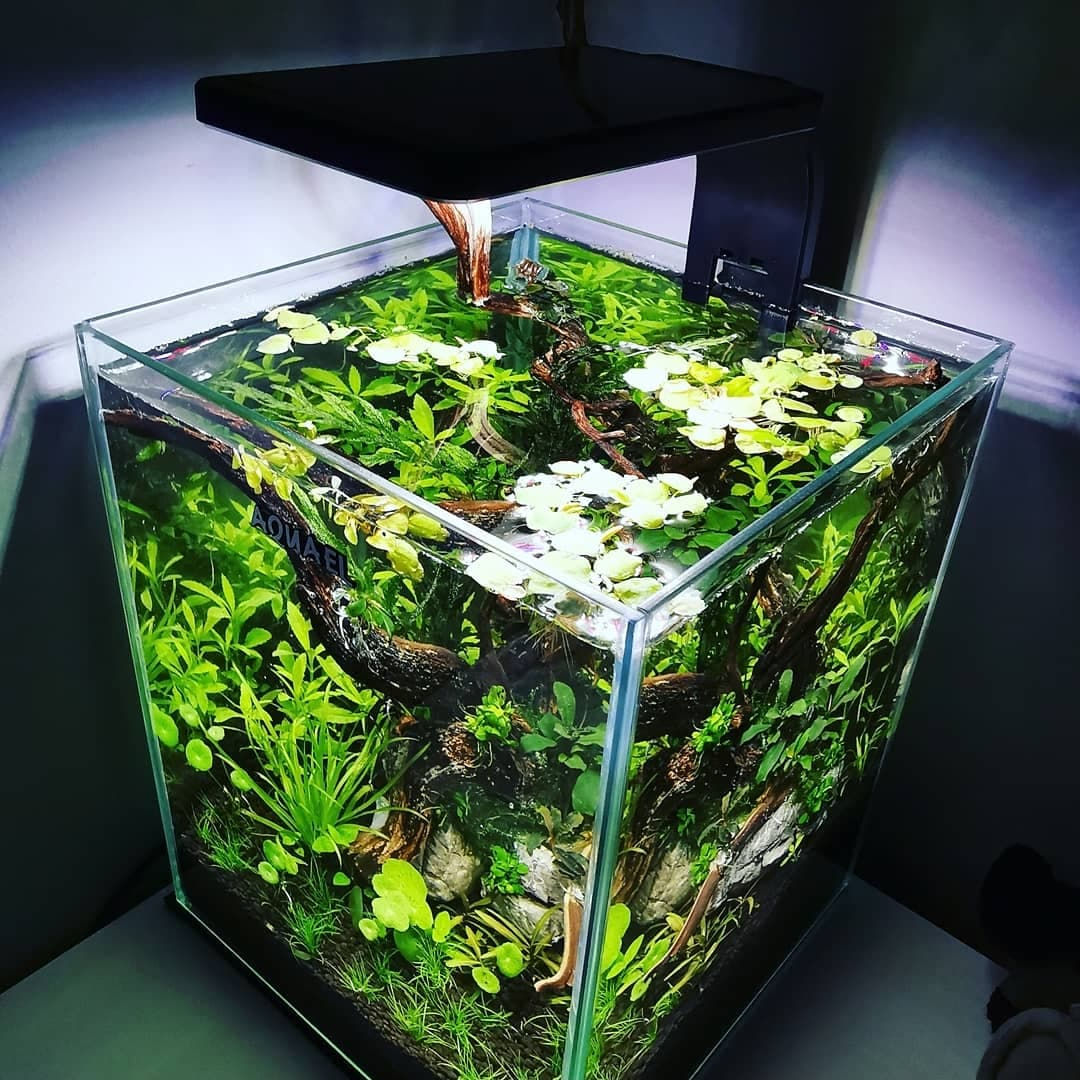
There are couple of things that we have to take into account while lighting the aquarium. We strive to mimic the daily conditions under which our aquarium inhabitants would thrive in the natural environment. While having a fish tank, the general purpose of lights is to separate day and night. The separation influences fish behavior. This why you shouldn't leave the aquarium light on overnight. They need darkness to take a rest. Moreover, most aquarium fish can be affected by the bright aquarium light. Fish which take benefits from the right light, because it enriches their color are e.g. Betta Splendends or Angelfish.
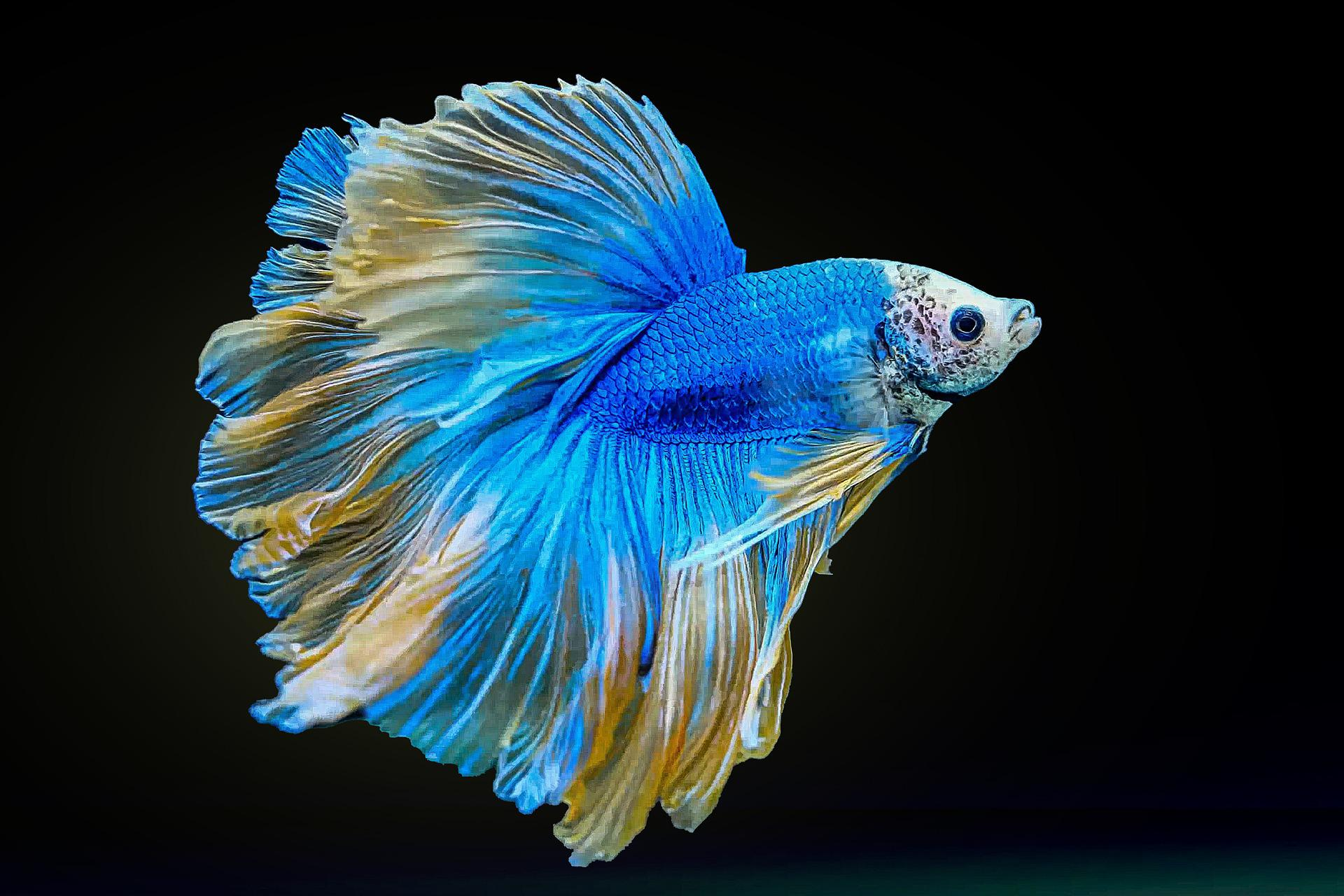
However, it is essential to control the amount of light that the lighting delivers to the aquarium in relation to plants. If you provide too little light, plants may die. If you supply too much light to the aquarium, you can expect massive algae growth. Generally, it takes around 8 to 10 hours of light during one day for freshwater planted aquariums but those numbers can vary. It depends on what kind of plants you have. We encourage you to predetermine the requirements before purchasing any plants.
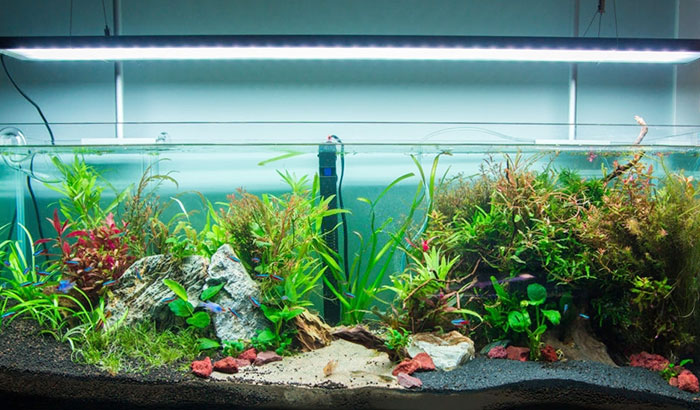
Which one should I choose?
Another, this time more difficult, question that may appear in your mind: 'which aquarium lighting should I choose?
It may be pretty overwhelming to select the most suitable one with all the different types available. The terminology is the main obstacle, e.g. color spectrum- Kelvin rating, its brightness, wattage, Photosynthetically Active Radiation (PAR)- these all matter. Don't worry, we are going to elucidate each of this terms in this article.
When asserting the aquarium lights, bear in mind that there are several other factors to consider. Firstly, the aquarium size. The length is rather obvious. The aquarium lighting should the same or almost the same length of the aquarium to spread the light evenly. Unfortunately, some people forget about water depth. The more profound is the water level, the brighter should the aquarium lighting be.
Before we point out specific light fixtures, we must demystify some tough, scientific terms.
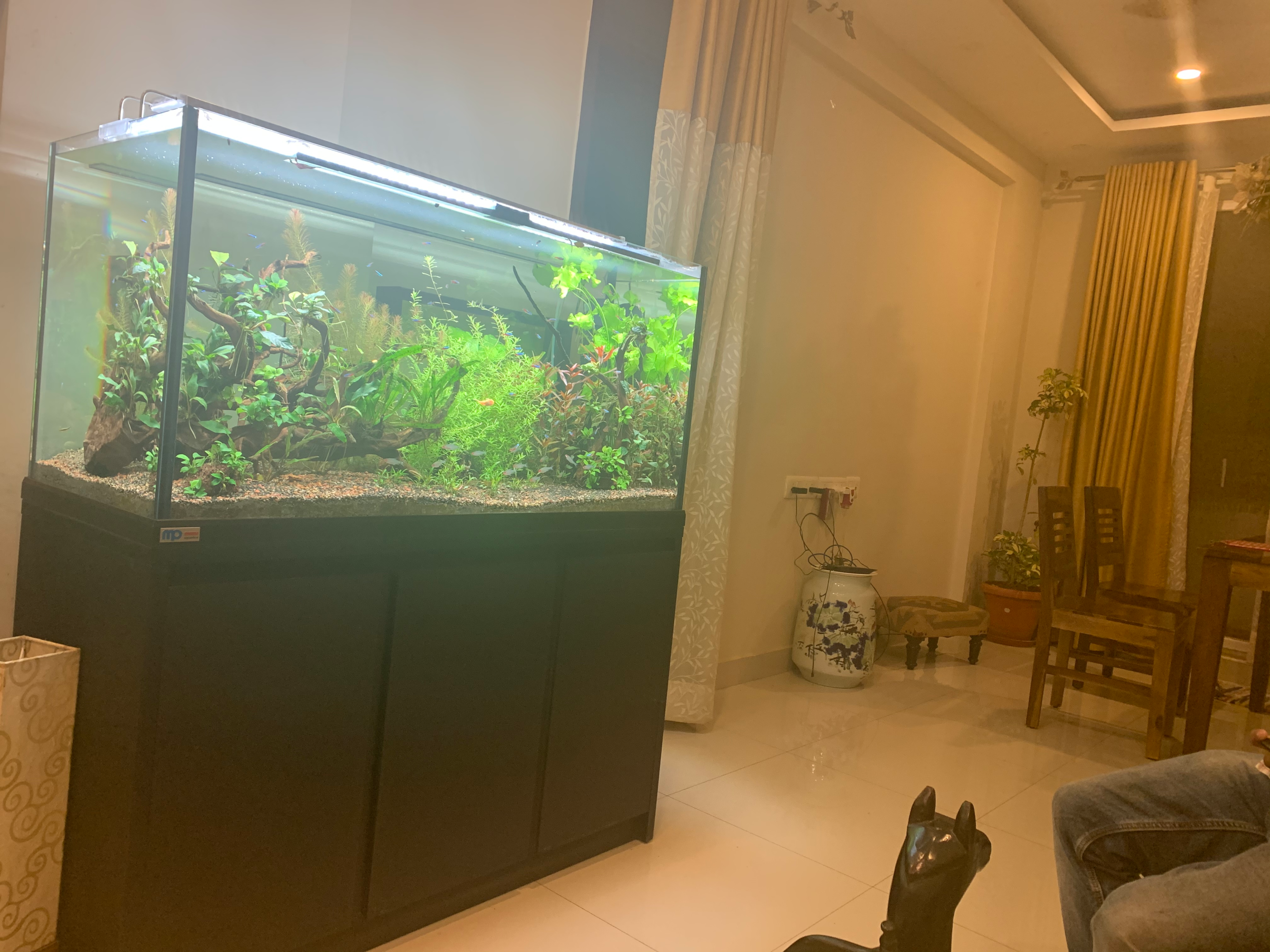
What is the meaning of wattage?
This is amount of power expressed in watts. Pair it off with a wallet. Wallet- Wattage. Similar, isn't it? Not only the spelling is alike. This is the exact quantity of energy, your aquarium light will use and you will pay for it accordingly at the end of the month in utility bills.
What is the meaning of Kelvin rating?
In a nutshell, the higher the Kelvin rating (expressed in the letter K), the whiter the light will be. Low Kelvin rating means a warm color.
The light spectrum in aquarium lights ranges between 5000K to 20000K. For reference, daylight at noon is approximately 5500K.
What is the meaning of Photosynthetically Active Radiation (PAR)?
This is the amount of light available for photosynthesis, which is light in the 400 to 700-nanometer wavelength range. Simply put, it is responsible for plant growth and beneficial algae.
What is the meaning of Lumens?
Last but not least, the overall brightness of the aquarium lighting, perceived by the human eye- light intensity.
Types of light fixtures
Below, we present to you the advantages and disadvantages of various aquarium lights that are available on the Internet or at a local pet store:
LED aquarium lights
LED lights are intentionally in the first place because they are the most convenient and probably the most excellent choice for almost everybody. Here are only a few strengths that you will notice while having those:
Lower power consumption and the light shines in only one direction.
Their color spectrum does not change over time so there is no need to replace it after a few months.
The ability to dim or brighten the lights.
LED lights will fit any aquarium, from bigger ones to nano tanks.
The initial cost may be higher, but in the long run, these are profitable.
LED lights do not produce any heat so you do not have to cool anything down.
LED stripes can be almost invisible if placed properly.
Fluorescent lights
Continuously, the most common type of lighting available with a killer feature- low costs. These come in a variety of sizes to fit any aquarium cover, usually in a shape of a circular tube. Standard fluorescent lights suit the needs of planted aquariums but are probably not the best option for fish tanks. Their bulbs generate a significant amount of heat so it is wise to control the water temperature. The water at the surface can be much higher than in lower parts of a fish tank. Temperature fluctuations can be harmful to our aquarium inhabitants.
Compact fluorescent lamp (CFL)
They are also known as compact fluorescent light or energy-saving light. It was designed to replace incandescent light bulbs. It uses much far less energy, lasts much longer than a standard one. The only drawback is the initial cost but it saves a few more times its purchase price in electricity bills over the lamp's lifetime. Unfortunately, it also produces heat that is proportional with the number of watts of the system. If you equip your fish tank with multiple bulbs, make sure to activate an adequate ventilation system in your hood. As time passes, just like standard fluorescent lights, compact fluorescent lights lose their intensity and spectrum of the light produced by bulbs. This is why they require to be replaced after a year or two.
Conclusion
Summing up, there are a few things that you have to consider to reveal the beauty of your aquariums. If you have a planted tank, these figures might be useful: 6500K to 7500K, 15-30 PAR for low-light plants, 30-80 PAR for plants that require medium-light conditions and above 80 PAR for live plants that need to be extremely well-lit. Look for this information on a label or ask the salesman. In contrast to plants, fish do not have a biological desire for light. In general, 5500K to 6500K will be efficient for fish-only tanks.
In most cases, LEDs will be the best solution but if you perceive it differently, choose as you wish. If you want to extend the life of a light unit by preventing moisture from getting into it, you should use some kind of a protective cover over the bulb or LED, for instance a glass one will be a great choice.
